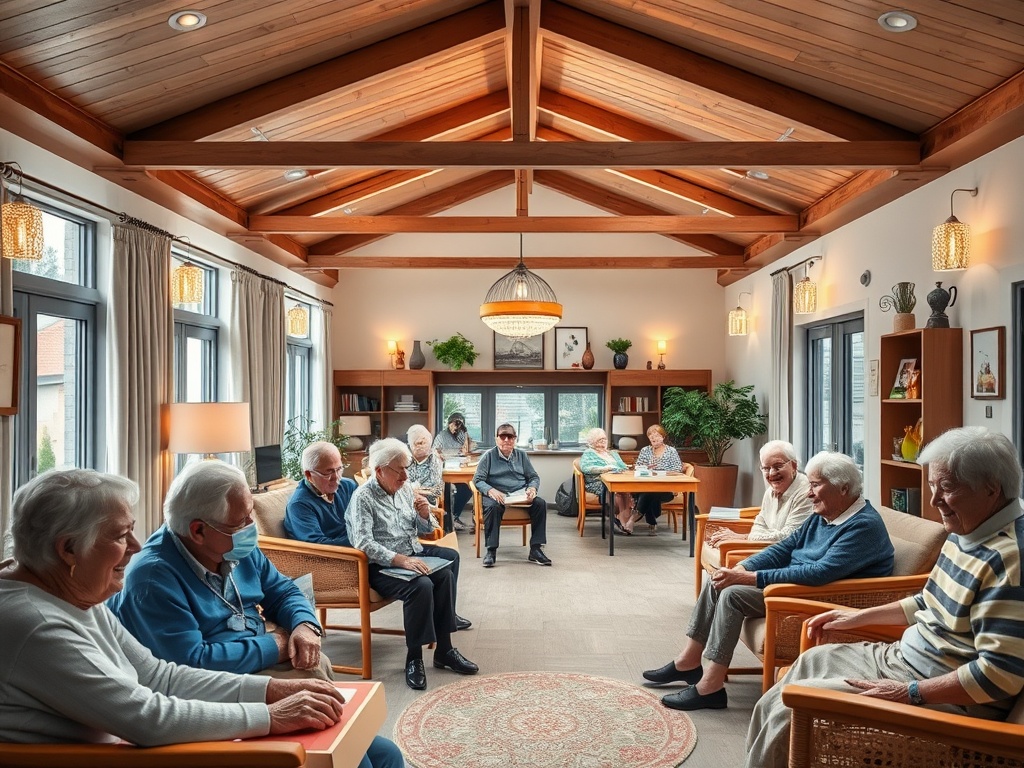The Impact of Covid-19 on Care Homes: A Personal Story

When the Covid-19 pandemic emerged five years ago, government officials assured the public that they would create a “protective ring” around care homes. Unfortunately, this promise proved to be little more than rhetoric, as elderly patients were discharged from hospitals into care facilities that were left ill-equipped to handle the rapid spread of the virus.
Kate Meacock’s experience with her mother, Caroline Gray, who had been residing in a care home for over seven years with advanced dementia, highlights the emotional toll of the pandemic. As Covid-19 took hold, thousands of care homes across the UK prohibited family visits, leaving residents, particularly those with dementia, in distress. Many could not comprehend why they were suddenly separated from their loved ones, forced to communicate through windows.
“I was very much part of mum’s life, visiting her up to five times a week,” Meacock recalled. “Then, on March 11, 2020, the doors closed, and it would be a full 365 days before I could be with her again.”
Eight months into the lockdown restrictions, Meacock filmed a poignant video celebrating her mother’s 75th birthday, separated by a plastic Covid screen. The heartbreaking footage captured her attempts to connect with her mother, who lay in bed, oblivious to her daughter’s presence. “The staff would bring mum into the room, and I could see she was distressed,” Meacock shared. “They would comfort her, saying, ‘Kate’s come to see you,’ but she couldn’t see or hear me. It was devastating for everyone involved.”
Before the pandemic, her mother could still verbalize some thoughts, but following the separation, that ability diminished significantly. When Meacock finally managed to visit her mother again, she walked into the room and said, ‘hello mama,’ prompting a mix of laughter and tears as her mother held onto her hand tightly for the next half hour.
This harrowing experience led Meacock to become a founding member and volunteer for Rights for Residents, a grassroots campaign dedicated to safeguarding the human rights of individuals living in care homes. In a significant development, a pioneering data-sharing pilot project has emerged, aiming to monitor infections such as Covid-19 in care facilities across England. This initiative, backed by the campaign, promises to prevent care homes from closing their doors in the face of future pandemics.
Nearly 700 care homes have enrolled in the VIVALDI Social Care Project, which seeks to connect resident lists with existing NHS data sets. This includes hospital admissions, mortality statistics, immunization records, laboratory test results, and prescription information, thereby creating a comprehensive overview of residents’ health.
Summerlands care home in West Sussex, managed by Lowela Alcazaren, was the first to participate in the 12-month pilot study, which aspires to reshape policies regarding virus outbreaks in residential care. The insights derived from this data will aid care homes in refining their strategies to combat outbreaks, such as the ongoing “quad-demic” of Covid-19, flu, norovirus, and RSV infections, alongside urinary tract infections (UTIs).
As winter progresses, thousands have been hospitalized due to these four viruses, but the research project, co-led by a University College London (UCL) team, holds the promise of lessening the impact of outbreaks and enhancing the quality of life for residents. Recent NHS England statistics have indicated alarming trends, with norovirus hospital cases reaching unprecedented levels. The latest report revealed that an average of 1,160 hospital beds were occupied daily by patients exhibiting norovirus-like symptoms, a 22% increase from the previous week.
While many patients can manage their symptoms at home, the elderly face a higher risk of severe and prolonged illness. The UK Health Security Agency recently reported that norovirus cases in England have more than doubled compared to historical averages for this time of year, thereby escalating the risk of outbreaks in care facilities.
In the long run, this project aims to facilitate clinical trials within care homes, including trials for norovirus and RSV vaccines. Historically, care home residents have been largely excluded from clinical studies, even though they stand to benefit significantly from new treatments.
“What happened with my mother underscores the importance of this project,” Meacock stated. “If we can improve how infections are monitored, prevented, and managed, we can ensure that care homes—unique environments—can safeguard both their residents and staff while allowing families to maintain essential connections.”
Alcazaren, the manager at Summerlands, noted that they have been fortunate to avoid the quad-demic this winter, though nearby care homes have suffered losses. “It only takes one person to come in and spread a virus,” she cautioned. “The stress of managing this situation is constant, as I want to ensure that what happened during the pandemic never occurs again.”
During the pandemic, some nearby care homes lost half their residents, and Alcazaren described the agony faced by managers who had to deliver devastating news to families. “It was a nightmare every single day, and the emotional toll was significant,” she reflected. “We felt abandoned, particularly at the onset of the pandemic, as we grappled with the unknown.”
Sue Curnock, who waited until the peak of the pandemic had passed to find a home for her 93-year-old mother Dee, also shared her experience. The family was reluctant to place her in a care home only to be barred from visiting. Curnock’s uncle was already residing in a care home when Covid struck, forcing her to communicate with him through a window. “He was hard of hearing, and the microphone never worked,” she lamented. “It was a nightmare. My husband’s mother passed away alone because we weren’t allowed to be there when she died, which was dreadful.”
The VIVALDI project, funded by the UK Health Security Agency and the National Institute for Health and Care Research, operates in collaboration with The Outstanding Society, Care England, and NHS England. It builds on the earlier VIVALDI study on Covid-19 in care homes, which played a crucial role in informing policies during the pandemic, such as limiting staff movement between facilities to mitigate infection risks and emphasizing the need for sick pay for care home workers.
Professor Laura Shallcross, principal investigator at UCL’s Institute of Health Informatics, emphasized the groundbreaking nature of the project. “We’ve designed it so that care homes are not burdened with data collection; instead, we will extract information from electronic care records to determine who is in a care home on any given day—this data is critical and previously unavailable,” she explained.
Shallcross continued, “If one care home excels at managing urinary tract infections, we want to identify their methods and share best practices across all facilities. Our ultimate goal is to leverage this network of data to conduct more complex research studies, such as clinical trials to evaluate new vaccines among care home residents.”
Zoë Fry, a registered nurse and executive director of The Outstanding Society, which promotes best practices across social care providers, hailed the pilot as “groundbreaking.” Having previously owned a care home during the pandemic, she recounted the challenges faced. “If we had two or more residents or staff displaying norovirus or Covid symptoms, we had to declare an outbreak and shut down the facility. Much of this was due to policies based on NHS data, which does not account for the unique nature of care homes,” she noted.
“You may have residents at different levels of care, yet the existing policies require shutting down the entire home. This project aims to generate data that will inform new policies, allowing us to keep our doors open,” Fry asserted. She emphasized that social care has never had access to automated data collection of this nature, unlike the NHS, which routinely utilizes data for decision-making.
Fry characterized the year-long pilot as the “missing piece of the puzzle” in enhancing the lives of those relying on adult social care services. Once data is collected, it will be made available on dashboards accessible to various providers within the adult social care and NHS sectors. “With this data, we can collaborate with care homes to implement changes that improve practices and shape policy based on shared experiences,” she added.
Professor Martin Green, chief executive of Care England, expressed that the VIVALDI project will give a voice to the social care sector, establishing a strong foundation for future research to shape the landscape of social care. “Infections continue to close care homes,” Meacock emphasized. “The pandemic may have started five years ago, but the repercussions persist, with care homes still closing due to the information they receive regarding infections, whether related to Covid, flu, RSV, norovirus, or others. This issue is far from resolved.”
“As part of the Rights for Residents campaign, being involved in this vital and exciting project is crucial for our present and future,” she concluded.
